Sasha Gordon used to make hyperrealist art, but these days her paintings lean less into the particulars of technique and more into the particulars of herself. For her new exhibition, “Hands of Others” at Jeffery Deitch in New York, Gordon brings her most honest approach yet. Through a compelling mix of fine detail and dreamlike exaggerations, Gordon continues to evolve in style and extend the depth of her subjects. Each piece ushers viewers into intimate scenes of daily life as her subjects—which she identifies as various versions of herself—grapple with vulnerability, comfort, hyperawareness, and pride.
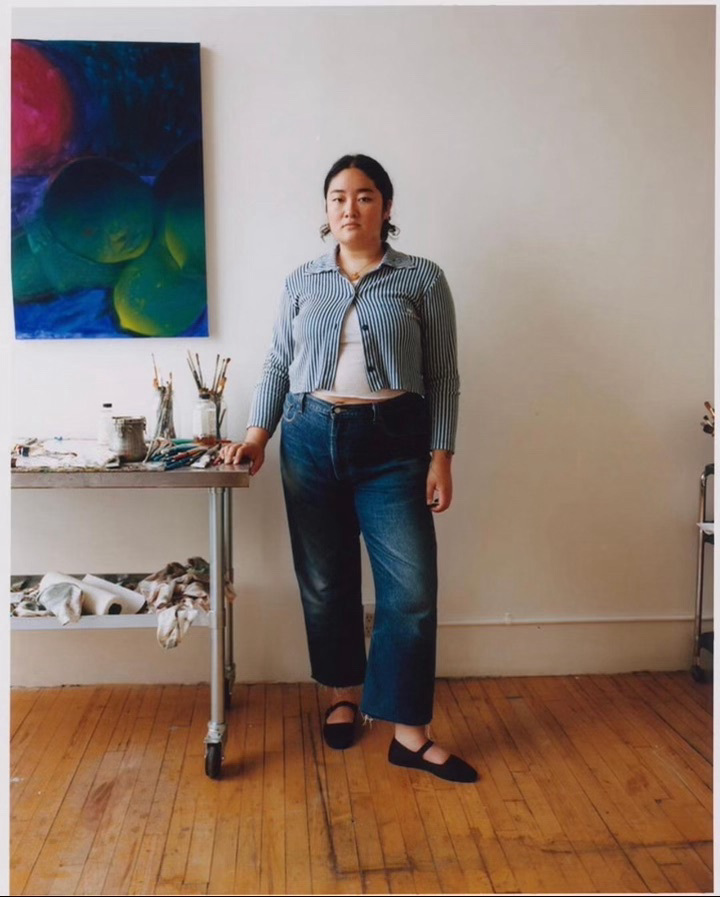
Rachel Elizabeth Cargle: Skin, eyes and hands are all such significant features in your subjects, and you render them in such an intentional way. Why?
Sasha Gordon: I had a hard time growing up. I found myself not valuing myself as a person, which led me to dissociate from my body. Paying attention to these aspects makes me see myself as a more permanent identity. The different parts of the body, and how they’re rendered, can tell the whole narrative without being so literal. Sometimes the colors will say something that the facial expression doesn’t. It’s a way of storytelling.
My subjects are variations of myself. I’m creating this world with these different variations and there is this hierarchy and competition between each version—reflecting the very real conflict amongst the self.
REC: It’s interesting that you mention these different versions of yourself, and yet your title, “Hands of Others” suggests an external person. Can you speak to this tension?
SG: Growing up, I felt there is the “me” who is present but there’s also this other, external force that’s judging and controlling what I do. “Hands” represents the literal hands in the work but also this outer conscious being that’s critiquing all my actions and thoughts and everything I do. A lot of my work makes you question who the viewer is and what power they have over the subjects in the painting—who usually have these startled facial expressions, or sometimes they’re menacing or giddy. It’s very dependent on who the viewer is and how they relate to the work.
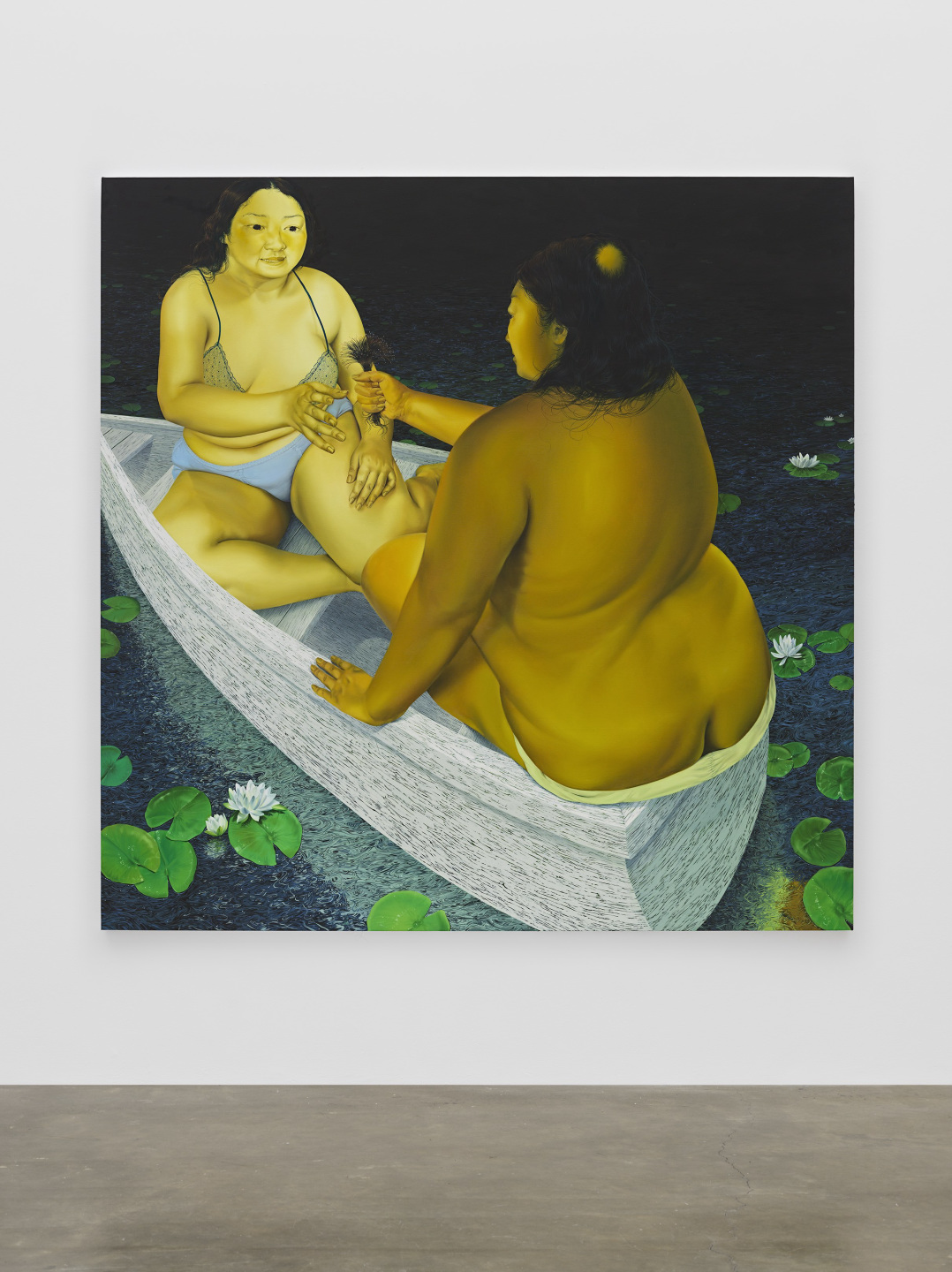
REC: I love the surprising ways nudity shows up. Can you speak to your decisions on where to include it?
SG: Sometimes clothing can add too much context to the narrative and I want the characters to be freer from assumptions. They’re most vulnerable when they’re nude. So much body language can be shown through skin and the folds, and there’s a different type of movement that I’m interested in. And there’s obviously more intimacy in those scenes.
REC: It’s amazing to be able to witness your exploration of self as you’ve evolved as an artist. Was there any part of your identity that surfaced more in this most recent show?
SG: Queerness is definitely more prominent in these works. My past works have hinted at it, but in this show it’s more direct. There’s one piece where the subjects are on a date, and there’s another where these two girls are pinky-promising, and their nipples are pinky-promising as well. It’s more intimate and honest because I’m getting more comfortable with my own queerness.

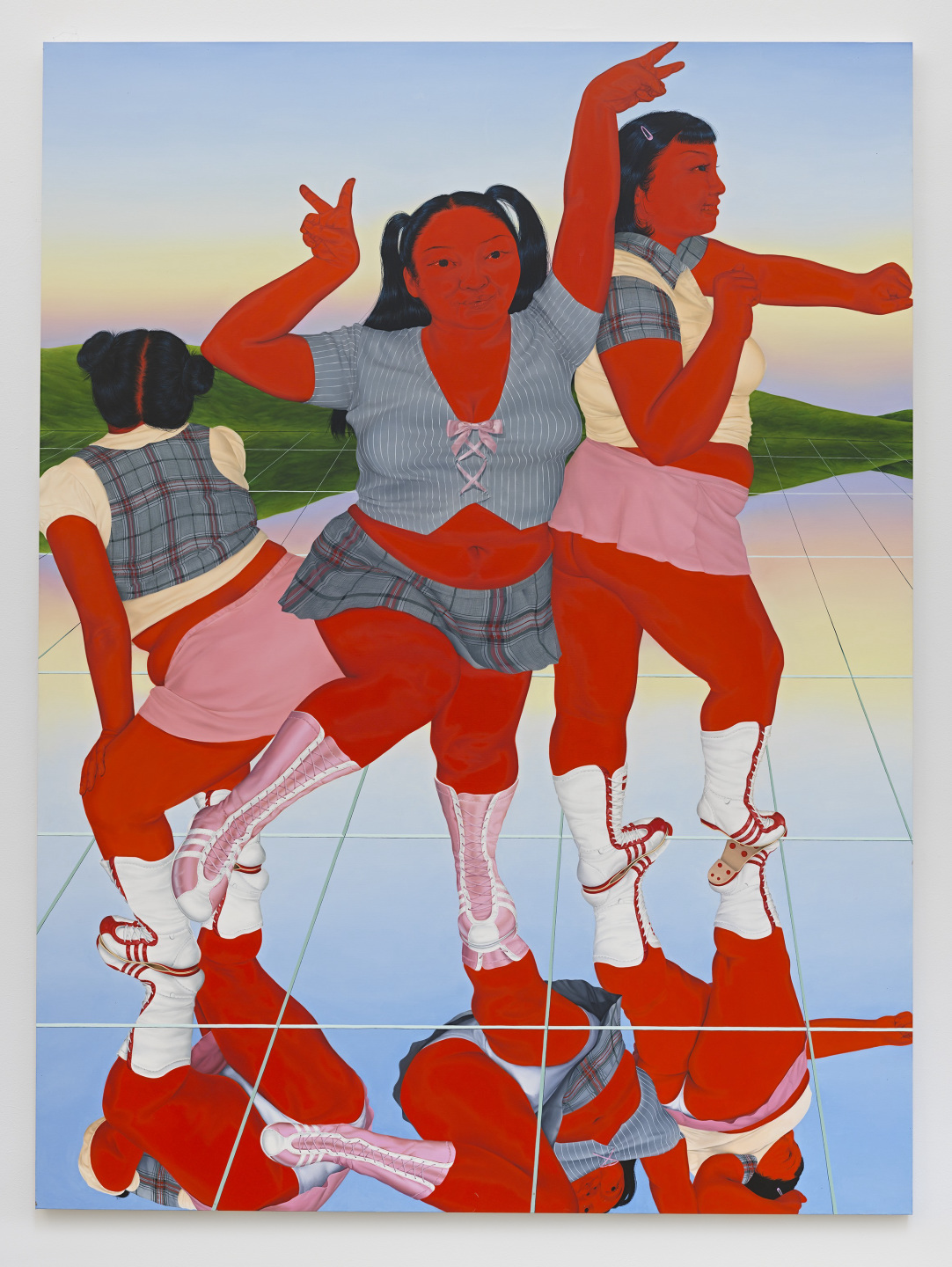
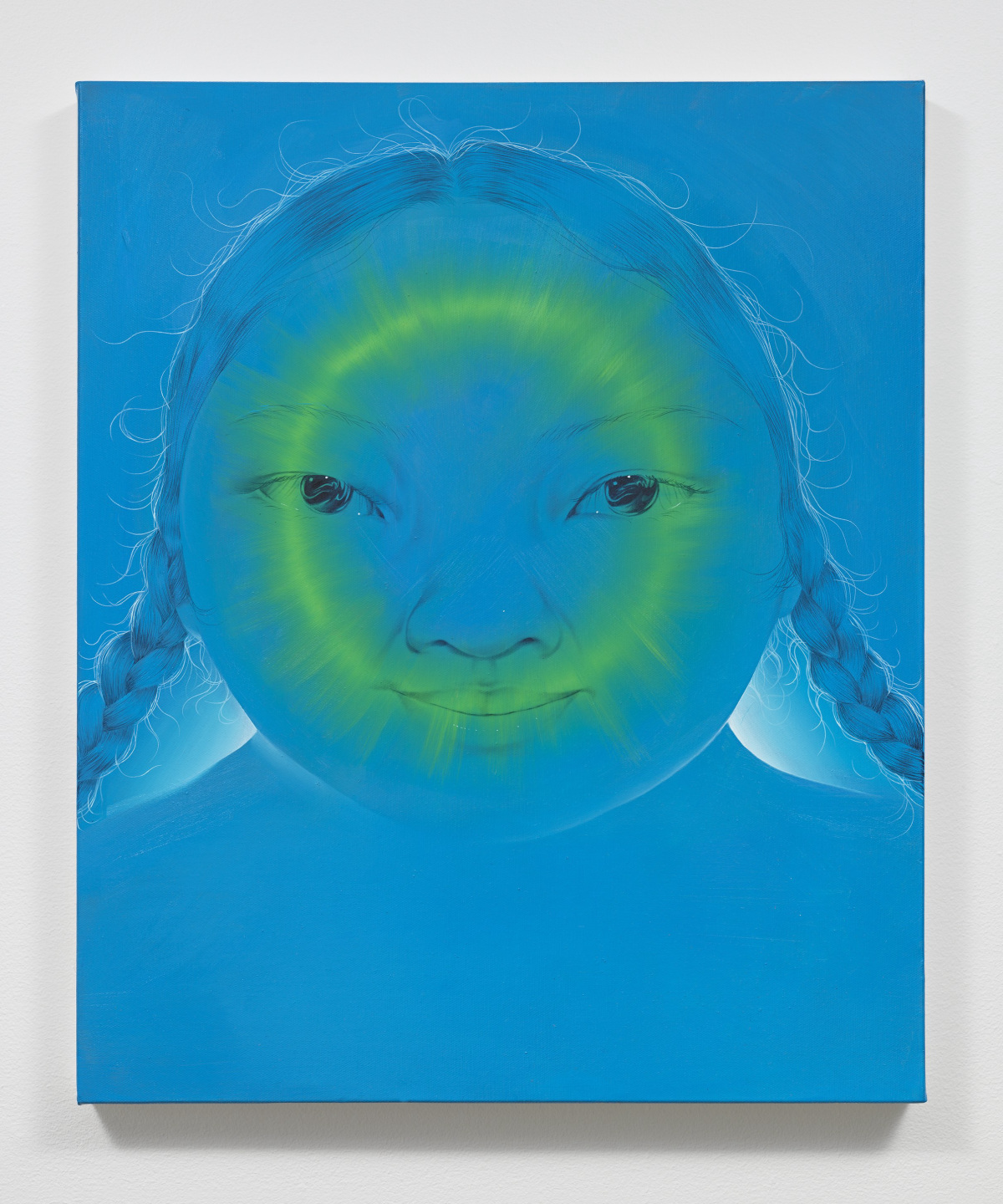
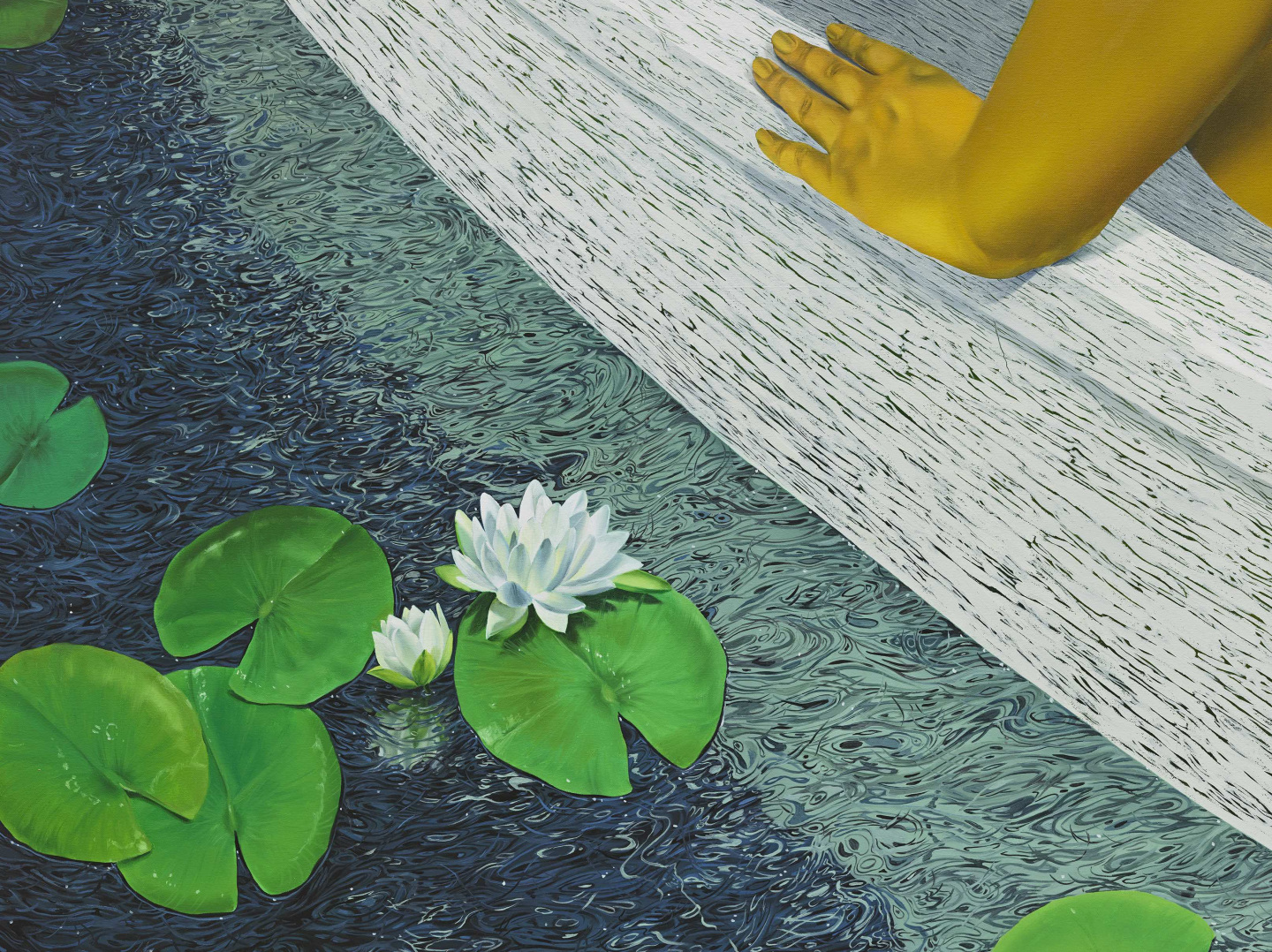


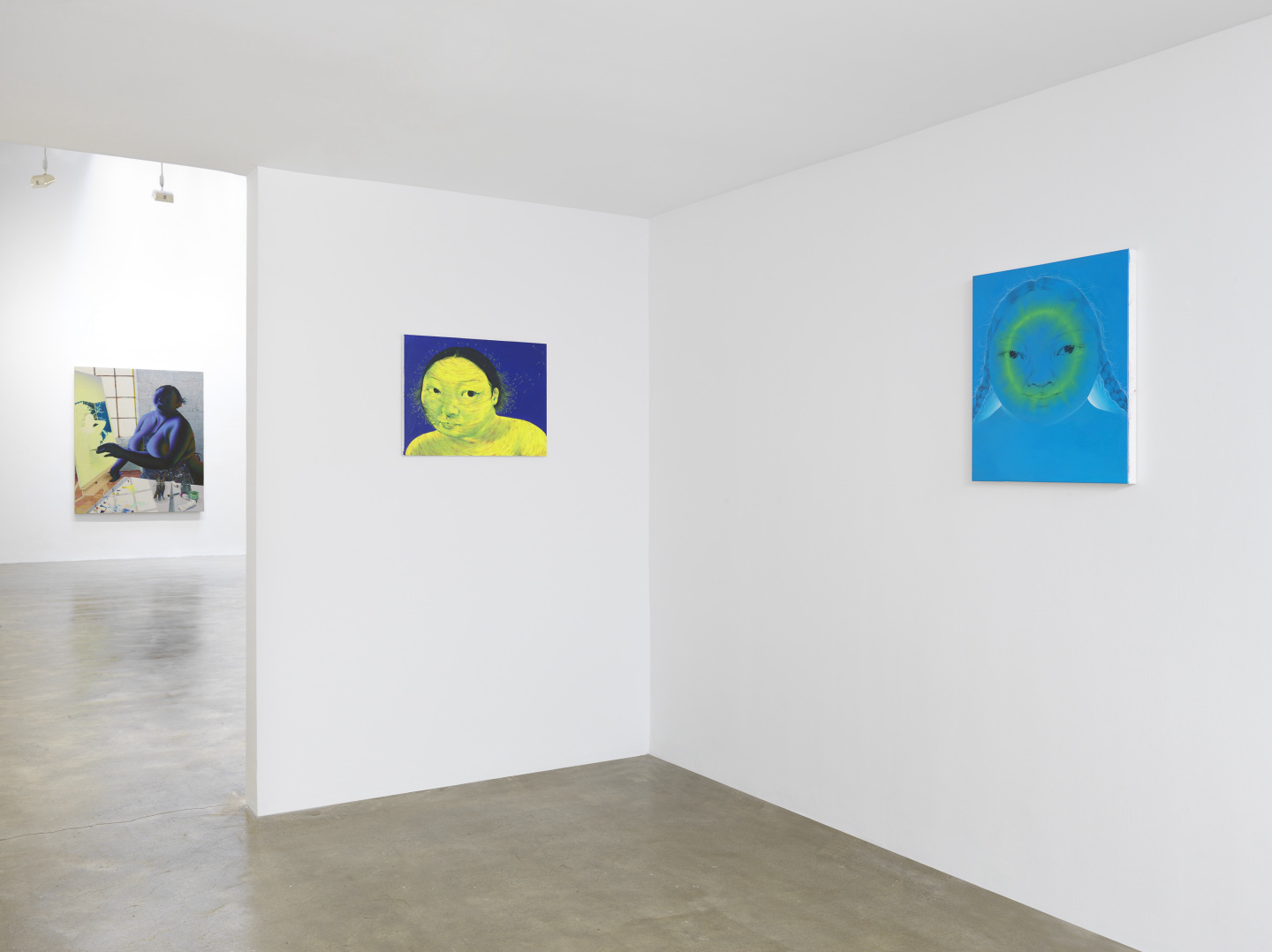
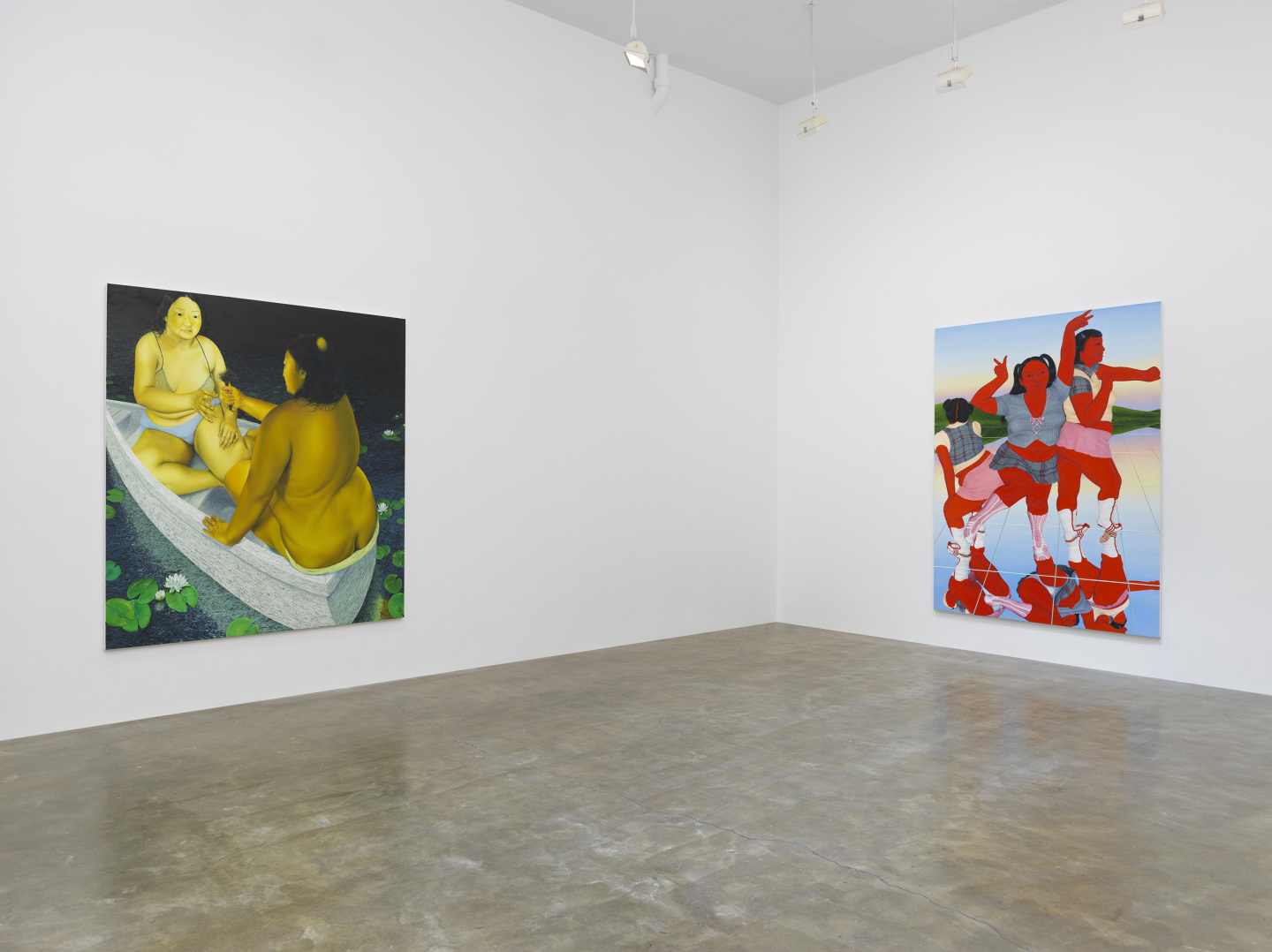
REC: Is there a particularly meaningful artwork in the show you can share?
SG: There’s one piece titled Almost a very rare thing with two girls in a really isolated scene—it could be a pond or some other body of water. They’re on this decrepit wooden boat. One girl, whose back is facing the viewer, has a bald spot on top of her head. She’s giving the other girl a bouquet of her hair. The other girl puts her hand out and receives it with this grossed-out, confused expression.
This piece is talking about my OCD. I used to have trichotillomania, which is when you repeatedly pick out your hair. I’m trying to show this feeling of wrongness one has all the time—that feeling of wrongness also came through my queerness; I just felt really uncomfortable with myself and my body. The subjects’ bodies are sort of frumpy and they’re wearing ill-fitting underwear. I wanted them to feel larger than life—they’re nearly double human-size.
REC: What are you most proud of about this show?
SG: Each piece is saying something very different from the other. They all fit the same theme, but I’m really proud of how each piece can stand alone. Also, I think I’m being more honest in these works. I’ve been allowing myself to find new ways of painting, trying to allow myself to have more freedom with experimentation. My previous work was super hyperrealistic and it’s been hard for me to stray from that because I love paying attention to detail. But I also think it’s really important to try new ways of painting and rendering.










 in your life?
in your life?

